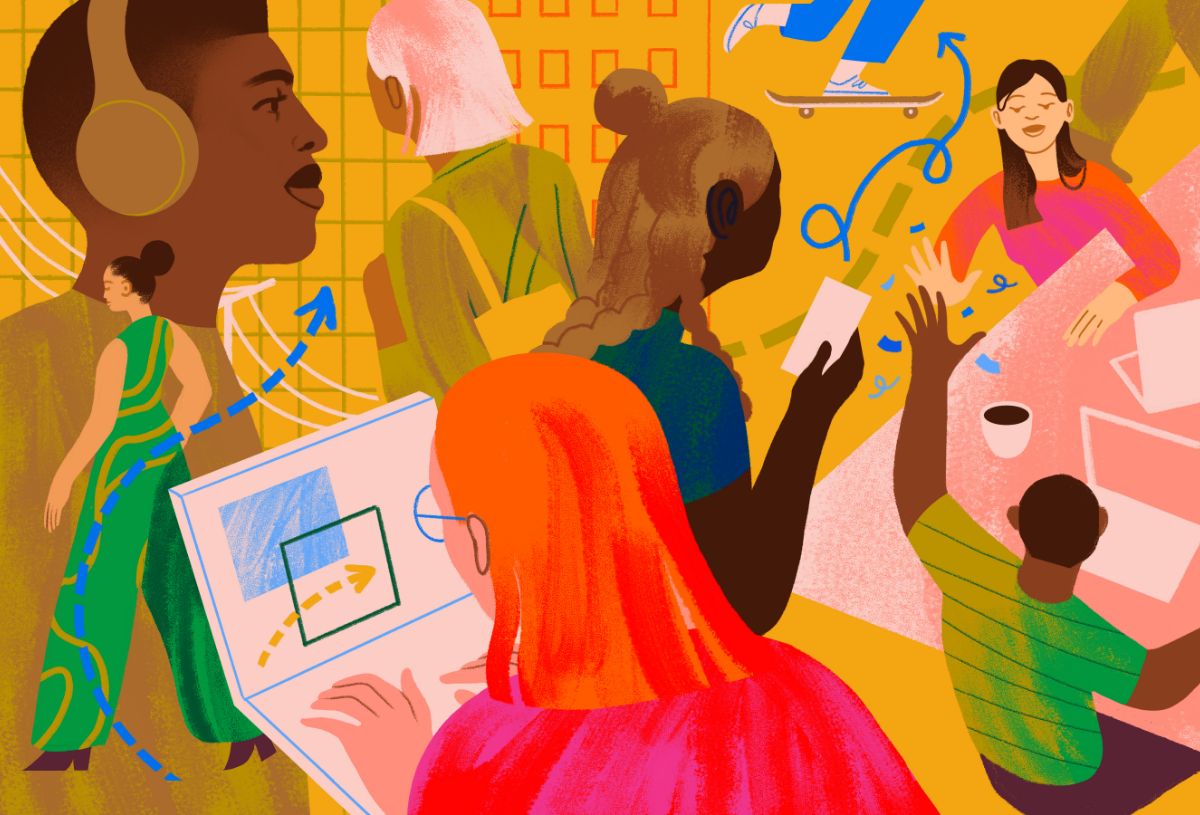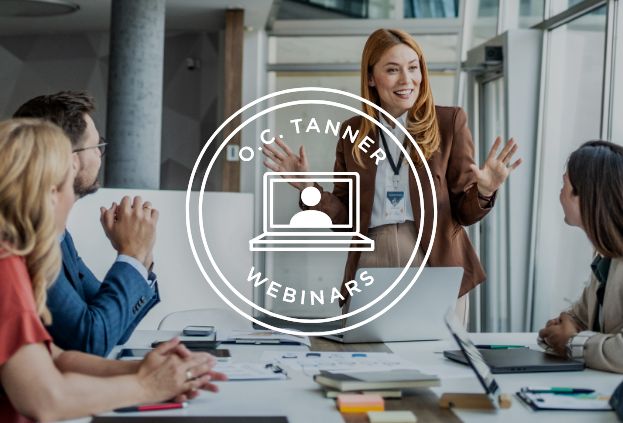The Research Is In: Employees Want a Modern Strategy for Total Rewards

Updated on
January 15, 2025
15
January
2025
HR professionals know updating our approach to attracting, growing, and caring for our people is necessary as the workplace and our relationship with it evolves. Today, with increasing complexities in the workforce, complex global economic conditions, and changing employee expectations, the traditional Total Rewards framework is due for a refresh.
What is the definition of Total Rewards?
More than 20 years ago, organizations created the concept of Total Rewards to refer to all the benefits organizations provide employees. A typical Total Rewards model includes compensation, variable pay and other forms of recognition for performance, healthcare benefits, voluntary benefits like disability insurance or critical illness protection, retirement plans, paid time off, and career development opportunities. More recently, additional Total Rewards examples introduced offerings like pet insurance, home and auto insurance, as well as wellness and mental health programs.
Why are Total Rewards important in organizations?
An effective Total Rewards strategy is designed to attract and retain employees for the long term. The ultimate goal of an effective Total Rewards strategy is for employees to stay and contribute at a high level because they feel cared for, appreciated, and supported by the organization that has invested in their growth and wellbeing.
Total Rewards can play an important part in an employee’s ability to thrive at work. Research from our 2025 Global Culture Report finds when employees are happy with the Total Rewards their organization offers, they are less likely to suffer from burnout and mental health challenges and are more likely to be engaged and want to stay.

Traditional Total Rewards strategies are falling short
Unfortunately, our research also shows existing Total Rewards packages aren’t always fully meeting employees’ needs. Faced with increasing costs and complexities in life, employees are now looking for employers to provide always-on benefits that help meet planned and unexpected life challenges. Here are three reasons traditional Total Rewards programs are failing to meet employees’ needs:
1. Total Rewards can be confusing
Employees often don’t understand what Total Rewards are. They don’t always see combined offerings and packages as a way organizations care for them. In focus groups we conducted, one of the biggest hurdles with Total Rewards is that most employees simply don’t understand the name. We found less than 40% of workers know the meaning of the term “Total Rewards,” and only 14% of those people can explain it. Many employees confuse Total Rewards with customer loyalty programs.
Another challenge is that employees don’t find every element of Total Rewards a “reward." Employees consider much of Total Rewards, especially compensation and health benefits, to be basic expectations of the exchange of value between their effort and their employers’ benefit. In fact, many respondents expressed offense when such “basics” were referred to as “rewards”.
2. Total Rewards often provides an overabundance of offerings
By trying to tailor and personalize rewards for every employee, organizations have defaulted to providing as many offerings as possible, hoping employees will find things that are relevant to them. Organizations have begun to include dozens of resources for employees’ spouses, children, pets, home, mental wellness, financial preparedness, education costs, etc. Yet in doing so, employees are left overwhelmed and confused, and given choices that may frustrate them when they feel their basic needs still aren’t being met.
3. Total Rewards aren’t communicated well
In addition to the confusing name, our research also shows that it doesn’t matter how robust a benefits package is if employees don’t believe their organization truly cares about their people, inside and outside of work. The offerings themselves are meaningless if they don’t reflect an authentic concern for employees’ wellbeing. But what about the beautiful Total Rewards statements companies put so much effort into creating? Employees who feel fundamentally uncared for view them with cynicism and believe they are created to distract from low pay or a lack of company profit sharing.
What’s missing from most Total Rewards strategies? It’s not new or more offerings. What’s missing is the employee perspective.
“The reality is that three shifts in the work environment have eroded the impact of the traditional EVP: Employees are people, not just workers; work is a subset of life, not separate from it; and value comes through feelings, not just features.”
—Carolina Valencia, Vice President, Gartner
Total Rewards should meet employees’ basic needs and communicate care
When it comes to Total Rewards, organizations must remember employees are looking to have their basic needs met. In today’s workplace, the relevance and effectiveness of Total Rewards for employees depends on how they answer the question: Am I surviving or am I thriving at work?
Employees who are merely surviving at work face financial uncertainty and have little autonomy or growth opportunities, leading them to feel anxious, insecure, and pessimistic about the future. Worse, their struggles at work impact their ability to survive outside of work.
But employees who are thriving feel appreciated, work in companies with strong cultures, and have opportunities for growth and development. They feel a sense of security and hope for the future. A Total Rewards system should look to meet employees’ needs across the spectrums of surviving and thriving to show the company cares about them as a person and is fully invested in their whole-life success.

When we asked employees to rate the impact of different elements of Total Rewards on their ability to survive or thrive at work, we found compensation and recognition were essential to providing financial stability to help employees survive, while the combination of recognition and career development most helped employees thrive in the long term.

The modern workplace requires a Total Rewards strategy designed to help employees survive and thrive. Our research shows it’s not the offerings themselves (which often have no impact without adequate support), but rather how the organization approaches Total Rewards that makes all the difference. Rather than provide an exhaustive list of offerings, organizations should first attempt to meet employees’ basic needs. The purpose of Total Rewards should be to demonstrate how the organization cares about people’s wellbeing and wants everyone to thrive at work.
“Actions speak louder than words. All companies say they care, right? But few actually exercise that care.”
—Simon Sinek, Speaker and Author, Start with Why
Here’s a Total Rewards strategy example of a strategy done well:
1. Communicated with intent
Clearly and authentically communicate that the Total Rewards offerings you have are available because the organization values employees, cares about them, and wants to take care of their immediate and future needs so employees can thrive at work.
2. Resourced by the organization
Organizations should provide offerings that meet employees’ financial, health, mental wellness, recognition, and growth needs (rather than relying on external sources), subsidize offerings as much as possible, and provide time (on the clock) to use the offerings as needed.
3. Supported by leaders
Senior leaders should be familiar with Total Rewards offerings, extend verbal support for, and be generous in giving employees time to utilize offerings and resources.
4. Reinforced by recognition
Employee recognition serves as a bridge to help all employees feel valued and cared for, whether they are surviving or thriving. Integrate recognition into the daily employee experience as well as your Total Rewards framework so employees feel appreciated and know they matter.

Josh Bersin, Industry Analyst and founder of Bersin & Associates, puts it well: “What does total rewards look like when it’s fully realized? It is not a rebranding of comp & ben, but rather a dramatic shift in thinking about that fundamental exchange between employee and employer. It requires us to look well outside of the traditional silos of comp & ben to understand, quantify, and communicate all of the ways in which our organizations acknowledge, recognize, and compensate employees. At its best, a total rewards practice can change how people feel about their work and fundamentally shift how we attract and retain our people.”
Organizations that do this can help all employees thrive at work.
Check out more research and insights on the state of Total Rewards in our brand-new Global Culture Report.
Mindi Cox works to connect people with purpose to deliver human-centered business results. Currently serving as O.C. Tanner’s Chief Marketing & People Officer, she believes an organization’s potential is intimately tied to its sense of humanity. After more than two decades in Sales, Marketing and as a Human Resource Executive for O.C. Tanner, her core goal remains that same: to help cultivate workplace cultures where individuals feel connected to the greater purpose and impact of their work, inspiring people to seek personal and professional progress.
Mindi has been honored with various awards for her work including Silicon Slopes’ Chief People Officer of the Year in 2023, Human Resource Executive of the Year by the Stevie Awards for Great Employers and Human Resource Executive of the Year by Utah Business Magazine. She was also recently named among the 30 Women to Watch in Utah Business. She is a member of the Forbes Human Resource Council and is frequently sought after to contribute to podcasts, books, and articles focused on workplace culture and people leadership. Professionally, she is most proud of her role in the leadership and culture work that has resulted in O.C. Tanner being named three times to the Fortune 100 Best Companies to Work For list and what that means for the workplace goodness the people of O.C. Tanner experience every day. She is SPHR and SHRM – SCP certified and also holds a bachelor’s degree in journalism along with an M.B.A. from the University of Utah. She is the proud mom to three busy sons and is grateful for the perspective her crew gives her on work, life, wellbeing and whole-life awareness as a business priority.
Mindi Cox works to connect people with purpose to deliver human-centered business results. Currently serving as O.C. Tanner’s Chief Marketing & People Officer, she believes an organization’s potential is intimately tied to its sense of humanity. After more than two decades in Sales, Marketing and as a Human Resource Executive for O.C. Tanner, her core goal remains that same: to help cultivate workplace cultures where individuals feel connected to the greater purpose and impact of their work, inspiring people to seek personal and professional progress.
Mindi has been honored with various awards for her work including Silicon Slopes’ Chief People Officer of the Year in 2023, Human Resource Executive of the Year by the Stevie Awards for Great Employers and Human Resource Executive of the Year by Utah Business Magazine. She was also recently named among the 30 Women to Watch in Utah Business. She is a member of the Forbes Human Resource Council and is frequently sought after to contribute to podcasts, books, and articles focused on workplace culture and people leadership. Professionally, she is most proud of her role in the leadership and culture work that has resulted in O.C. Tanner being named three times to the Fortune 100 Best Companies to Work For list and what that means for the workplace goodness the people of O.C. Tanner experience every day. She is SPHR and SHRM – SCP certified and also holds a bachelor’s degree in journalism along with an M.B.A. from the University of Utah. She is the proud mom to three busy sons and is grateful for the perspective her crew gives her on work, life, wellbeing and whole-life awareness as a business priority.
Mindi Cox works to connect people with purpose to deliver human-centered business results. Currently serving as O.C. Tanner’s Chief Marketing & People Officer, she believes an organization’s potential is intimately tied to its sense of humanity. After more than two decades in Sales, Marketing and as a Human Resource Executive for O.C. Tanner, her core goal remains that same: to help cultivate workplace cultures where individuals feel connected to the greater purpose and impact of their work, inspiring people to seek personal and professional progress.
Mindi has been honored with various awards for her work including Silicon Slopes’ Chief People Officer of the Year in 2023, Human Resource Executive of the Year by the Stevie Awards for Great Employers and Human Resource Executive of the Year by Utah Business Magazine. She was also recently named among the 30 Women to Watch in Utah Business. She is a member of the Forbes Human Resource Council and is frequently sought after to contribute to podcasts, books, and articles focused on workplace culture and people leadership. Professionally, she is most proud of her role in the leadership and culture work that has resulted in O.C. Tanner being named three times to the Fortune 100 Best Companies to Work For list and what that means for the workplace goodness the people of O.C. Tanner experience every day. She is SPHR and SHRM – SCP certified and also holds a bachelor’s degree in journalism along with an M.B.A. from the University of Utah. She is the proud mom to three busy sons and is grateful for the perspective her crew gives her on work, life, wellbeing and whole-life awareness as a business priority.




